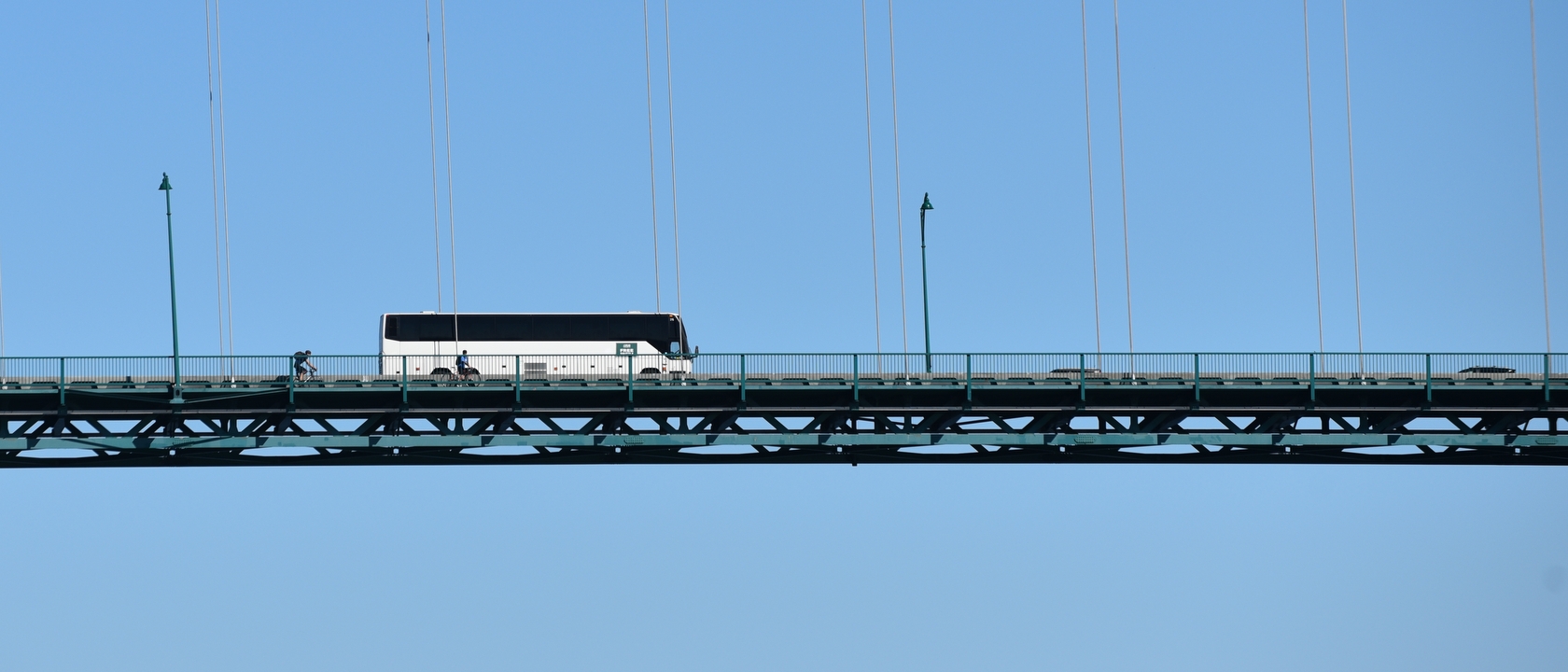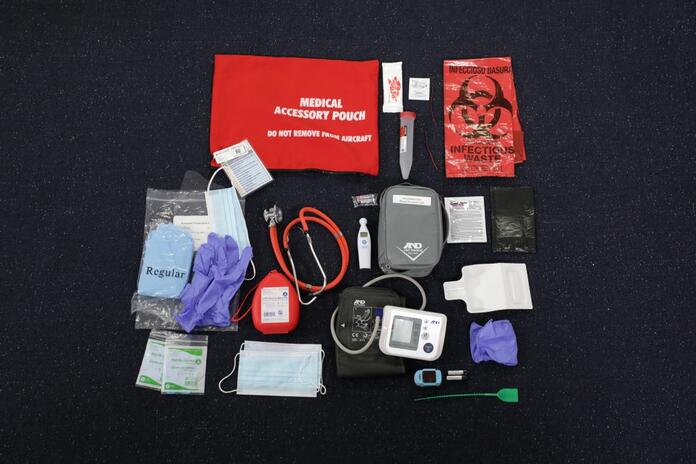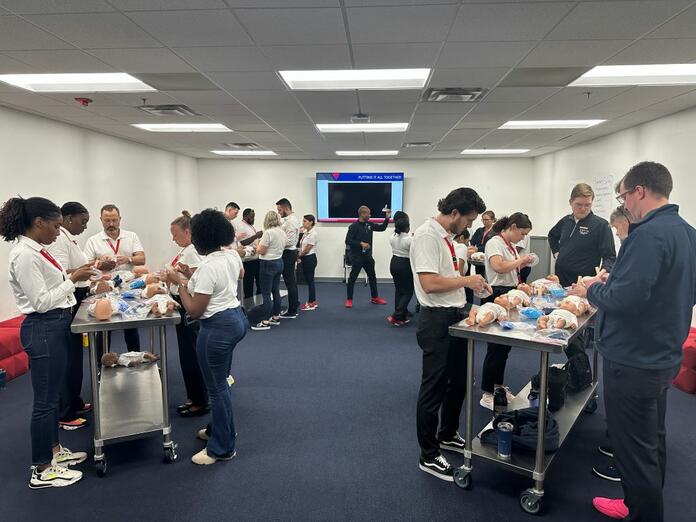SLOW TRAVEL

The exceptional customer care delivered by Delta’s flight attendants goes well beyond personalized, elevated service. Before earning their wings, each flight attendant trainee studies and practices rigorously to transform into safety pros whose No. 1 duty is to safeguard crew and customers – needing to show they can swiftly, compassionately and seamlessly shift from hospitality to emergency response at 30,000 feet.
“Above all else, the role of a Delta flight attendant is that of a highly trained safety professional. Our people take great pride in this responsibility,” said Tracy Moreo, a medical instructor for flight attendant training at Delta. “Our extensive work to ensure the safety of our customers is a key component of the in-flight experience we provide our customers on every Delta flight.”
Available to Delta flight attendants is an array of technology and tools to help them quickly assess everything from headaches to heart attacks; coordinate with the flight crew, Delta’s operations team and medical professionals on the ground; and get customers the care they need as quickly as possible.
On any given day, 4,000 Delta flights crisscross the world, over oceans and sparsely populated countryside far from hospitals and doctors’ offices. That makes a thoughtful, well-equipped response all the more critical.
Our commitment to continuously seek innovation and improvement is a core tenet of Delta culture and buttressed by our desire to better support our people and provide better service for our customers. Delta’s recent investments in upgraded medical diagnostic and communications technology to enhance our flight attendants’ capabilities when caring for ailing customers embody these core beliefs.
Here is a behind-the-scenes look at four things that should give you peace of mind the next time you see our crew respond to an in-flight medical event.
Recently, Delta instituted a pair of key tech-enabled enhancements to help our flight attendants more effectively handle in-flight medical events. The first is our transition to a new in-flight medical support provider, MedAire’s MedLink service, in March.
With MedLink, our flight attendants now have direct access to the service’s team of doctors through a secure app on their Delta SkyPro mobile devices. This allows for safe, real-time communication of crucial non-identifiable medical information that will help doctors more accurately assess the condition of the customer and recommend a course of action for the crew. Traditionally, flight attendants have had to depend on specialized headsets that can take precious minutes to set up and rely on passing paper forms to our pilots who serve as intermediaries when communicating with medical professionals on the ground. With the MedLink app, this process is as quick and simple as placing a call on your mobile phone. Thereby, greatly improving our flight attendants’ ability to respond quickly to medical events.
“I feel grateful that we have this tool that helped make a difficult situation less stressful,” said Lori Williams, a Delta Flight Attendant who deployed the app during a recent flight. “It allowed us to devote more of our attention to providing immediate aid for the customer.”

In addition to our adoption of MedAire’s MedLink service, we also upgraded our Red Pouch, which is the suite of medical diagnostic equipment found on board Delta aircraft. The new diagnostic equipment expands upon our already comprehensive collection of in-flight medical devices. The upgraded equipment, which we expect to be installed on our entire fleet by the end of 2023, include a pulse oximeter, temporal thermometer, automatic blood pressure cuff and enhanced medical-grade stethoscope.
“The new devices on our aircraft make it so much easier to gather the vital information we need to assess the condition of our customers,” said Kenneth Sperling, a Delta Flight Attendant. “For example, the pulse oximeter now gives us the capability to provide doctors with real-time blood oxygen readings while the automatic blood pressure cuff is not only quicker to setup but is also much more intuitive to use while returning more accurate and consistent readings.”
Delta’s upgraded suite of diagnostic devices work in tandem with the new capabilities made available by our switch to the app-based MedLink service. According to Sperling, the new technology “really streamlines the process of collecting, communicating and receiving crucial information during a medical emergency.”
“I’m thankful that not only have we been given these fantastic tools to help us navigate through a medical event, but also for the support and training on how to best use them,” Williams added.
The upgraded Red Pouch and switchover to MedLink is a part of Delta’s overarching commitment to provide our people with the resources and support needed for success.
“At Delta, we are constantly pursuing new ways to evolve and enhance our procedures and available resources to support the wellness of our people and bolster their ability to assist customers,” said Dr. Henry Ting, Delta’s Chief Health and Wellness Officer. “It is our belief that these recent investments in in-flight medical technology will make responding to medical events less taxing for our people and lead to quicker and more effective medical care for customers.”
Each Delta flight attendant receives six weeks of initial training along with recurrent training every 18 months. Our training curriculum is designed to prepare our flight attendants to be world-class in-flight safety professionals who also provide top notch service for our customers.
Our flight attendants come to us from all walks of life. While a number do have a background in medicine, it’s experience that’s valued but not required to become a Delta flight attendant.
As a result, our medical training is focused on gathering and communicating key information and symptoms presented by the customer to MedLink’s doctors.

In addition to identifying symptoms, our flight attendants receive instruction on how to provide basic first aid and CPR including the use of an AED. MedLink’s doctors advise the flight attendant on what care to provide, and, at times, our flight attendants will call for the assistance of any licensed or certified medical professionals who may be onboard.
During their initial training, our flight attendants are required to complete a total of six modules designed to prepare them to respond to onboard medical events. The training modules, spread out over 17 hours of instruction, consist of eLearning, classroom time, hands-on practice as well as training simulations in an aircraft cabin.
In some instances, Delta flight attendants may request the assistance of any physicians or other medical professional who may be on board the aircraft.
During in-flight medical events, the decision on whether the situation will necessitate an unscheduled landing is at the discretion of the captain with counsel from the doctors at MedLink and in coordination with Delta’s operations team on the ground. However, medical volunteers still play a key role in assisting with performing tasks as directed by the MedLink doctors in the treatment of an ailing customer.
“We are thankful for the medical professionals who selflessly volunteer their expertise during in-flight events,” said Dr. Ting. “Your willingness to come to the aid of our flight attendants and customers is truly appreciated by not only our people and also but also your fellow fliers.”